January 11, 2010
Making Sense of Smart Grid!
Over the past 3 years Portland state University has offered a unique class on the emerging Smart Grid and what it will mean for Oregon consumers of energy, how it will affect 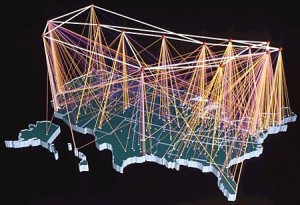 the utilities, the regulators, and what markets, services and products it might stimulate. The course is literally the first of its kind in the country and it tracks this emerging trend as well as following the new technologies in real time. PSU decided to offer this experimental course after being approached by some visionaries at Portland General Electric, including Pamela Morgan (née Lesh), then PGE’s Vice President of regulatory affairs and strategic planning, and Steve Hawke, Senior Vice President for customer service, transmission, and distribution. To accommodate the rapid evolution of this new discipline, Jeff Hammarlund designed the course so that it will integrate current developments in the Northwest implementation of Smart Grid even as they unfold! The class convenes every Monday in the Urban Center Building from 6:40 – 9:20 PM. _______________________________________________________
the utilities, the regulators, and what markets, services and products it might stimulate. The course is literally the first of its kind in the country and it tracks this emerging trend as well as following the new technologies in real time. PSU decided to offer this experimental course after being approached by some visionaries at Portland General Electric, including Pamela Morgan (née Lesh), then PGE’s Vice President of regulatory affairs and strategic planning, and Steve Hawke, Senior Vice President for customer service, transmission, and distribution. To accommodate the rapid evolution of this new discipline, Jeff Hammarlund designed the course so that it will integrate current developments in the Northwest implementation of Smart Grid even as they unfold! The class convenes every Monday in the Urban Center Building from 6:40 – 9:20 PM. _______________________________________________________
Introductions
It was hard to tell from the assembly of people gathered in front of room 303, who was teaching the class and who was attending. There were lots of familiar faces from the local utilities, from the BPA, energy efficiency consultants, lobbyists, regulators, Intel employees and several veterans of Jeff’s previous Smart Grid classes who were taking the course simply to absorb the updated information.
This year’s iteration of this cutting edge course, Smart Grid and Sustainable Communities, is being taught by:
Jeffrey Hammarlund, Adjunct Professor, PSU’s Mark O. Hatfield School of Government; President, Northwest Energy and Environmental Strategies; and Oregon Caucus Chair, NW Energy Coalition;
Conrad Eustis, PSU Adjunct Professor and Director, Retail Technology Development, Portland General Electric.
James Mater, co-founder and Director, QualityLogic, and founding board member, Smart Grid Oregon;
Ken Nichols, Smart Grid Consultant and ex-TransCanada energy trader; plus many other nationally and regionally known experts on various aspects of the Smart Grid. __________________________________________________________
As might be expected the first order of business was to try to define the amorphous concept loosely referred to as the “Smart Grid”.
Citing the Electric Power Research Institute (EPRI), Jeff Hammarlund reminded us that, “it matters how you define the problem; it can make a difference on the solution you arrive at.” In all, EPRI catalogued over 80 different definitions of the Smart Grid! Two other perspectives, worth calling out included definitions offered by Jesse Burst, the editor of the Smart Grid Newsletter: Smart Grid – the application of digital technology to the electric power infrastructure. Thomas Friedman’s vision of the Smart Grid included the following scenario:
“In the early years of the Energy-Climate Era, we progressed from an Internet thatconnected computers and the World Wide Web that connected content and Web sites…to an Internet of Things: an Energy Internet in which every device – from light switches to air conditioners, to basement boilers, to car batteries and power lines and power stations – incorporated microchips that could inform your utility either directly or through a special device, of the energy level at which it was operating, take instructions from you or your utility as to when it should operate and at what level of power and tell your utility when it wanted to purchase or sell electricity.”
Jeff Hammarlund then offered, if not a definition, then at least a set of characteristics that helped to define a framework within which Smart Grid could be said to be evolving. His definition, like the preceding ones, reflects upon the definer’s perspective – in Jeff’s case, his experience drafting energy policies.
- Smart Grid is not a thing or an end state.
- It involves a combination of values and characteristics that differ markedly from the present energy delivery system.
- It is a technology enabling process that will support new technologies, services, products and markets for the benefit of utilities, society and the environment.
- Smart Grid constitutes a process or journey that leverages new ways of measuring the energy market.
Smart Grid is what it delivers – defining the scope of its potential contributions.
 The second part of the class was delivered by Conrad Eustis, a PGE engineer with deep Smart Grid knowledge. Unlike Jeff’s policy driven perspective, Conrad’s “take” on Smart Grid was a more “bottoms-up” definition based on its expected benefits.
The second part of the class was delivered by Conrad Eustis, a PGE engineer with deep Smart Grid knowledge. Unlike Jeff’s policy driven perspective, Conrad’s “take” on Smart Grid was a more “bottoms-up” definition based on its expected benefits.
He began by considering the different classes of benefits that might be derived from the implementation of Smart Grid technology:
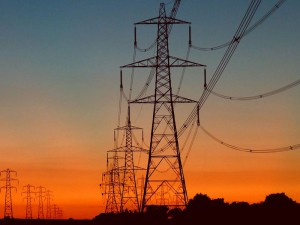
- Reliability – driven by the expensive loss of business continuity suffered during the East Coast Black out of 2003, utilities and their customers want to avoid another scenario of cascading failures that takes down the entire eastern seaboard. Investment in a more intelligent and communicative grid would be a start, and the designation of some ARRA monies for this purpose has help catalyze such efforts.
- Economic – The cost of the economic
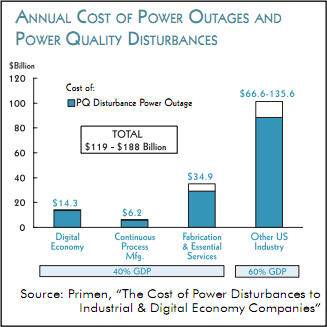 dislocation caused by both intermittent and major service interruption is said to cost the nation over $100 billion. Increasingly, as our nation’s infrastructure is automated through computerized management, the cost of outages becomes ruinously expensive, as an ever broader array of pivotal management functions become energy dependent for both analysis and execution.
dislocation caused by both intermittent and major service interruption is said to cost the nation over $100 billion. Increasingly, as our nation’s infrastructure is automated through computerized management, the cost of outages becomes ruinously expensive, as an ever broader array of pivotal management functions become energy dependent for both analysis and execution. - Security – Our current system for managing energy generation, distribution and planning future investments is based on an antiquated and uncommunicative system. Not only is it rife for failure, but it is increasingly vulnerable to sophisticated attack, or to the stresses of natural disasters.
- Efficiency – The Smart Grid should optimize asset utilization and allow utilities to operate more efficiently. Operationally, it should improve load factors, lower system losses and dramatically improve outage management. Additional grid intelligence should inform planners and engineers to build what is needed, when it is needed, to extend the life of assets, and to anticipate imminent failures, while at the same time maximizing labor deployment. Operational, management and capital costs should be reduced.
- Safety – A more intelligent grid should vastly increase the safety of the electrical
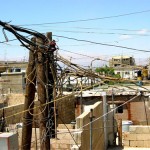 delivery system. Not only will this affect the safety of power infrastructure workers by permitting intelligent switches, and more robust safety systems, but it will also ensure the reliability of end-use devices throughout society upon whose uninterrupted operation is critical for society’s safe operation.
delivery system. Not only will this affect the safety of power infrastructure workers by permitting intelligent switches, and more robust safety systems, but it will also ensure the reliability of end-use devices throughout society upon whose uninterrupted operation is critical for society’s safe operation. - Environmental benefits – not only will reduced energy use contribute to a lessening of carbon emissions, but more efficient allocation of energy to integrate renewable energy will become increasingly important.
The Pacific Northwest Perspective
Here in the Pacific Northwest there is particular interest in the implementation of the Smart Grid. The BPA in conjunction with Batelle is currently running the largest Smart Grid project in the country here in the Pacific Northwest.
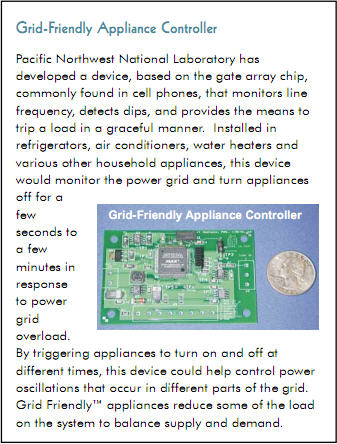 The Smart Grid Oregon Association is one of the first organizations across the nation to bring together representatives from utilities, governmental agencies, energy consultancies, third party service providers, engineering firms, equipment manufacturers, environmental groups, non profit groups and regulators to envision and evolve a common vision for the statewide and regional implementation of the Smart Grid. The association has already convened one conference that attracted local, regional and national experts to address the emerging regulatory, equity and market models upon which regulatory and incentive structures can be erected.
The Smart Grid Oregon Association is one of the first organizations across the nation to bring together representatives from utilities, governmental agencies, energy consultancies, third party service providers, engineering firms, equipment manufacturers, environmental groups, non profit groups and regulators to envision and evolve a common vision for the statewide and regional implementation of the Smart Grid. The association has already convened one conference that attracted local, regional and national experts to address the emerging regulatory, equity and market models upon which regulatory and incentive structures can be erected.
The Portland State University courses devoted to the evolution of Smart Grid implementation represent a unique contribution, and serve to provide a base of educated managers that can participate in the ongoing design of the regional implementation.
The Oregon Public Utility Commission (OPUC) has also been quite active in seeking to lay out a framework through which a comprehensive set of regulatory guidelines can be established that both safeguard the public investment, ensure stable and economic power, even as we begin to rethink the basic underlying concepts involved in the delivery of energy resources across the region.
Beginning from today’s status quo…
Having provided a parallel definition of the Smart Grid derived from an engineering perspective (as opposed to a policy-centric viewpoint), Conrad Eustis began to lay the ground work for exploring the structural aspects of a Smart Grid. To do this he began to lay out the fundamental elements of today’s mostly “dumb” grid.
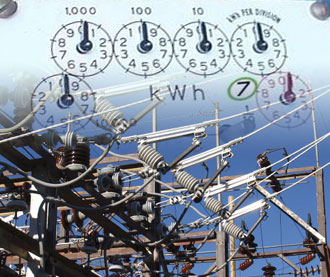 He described the network of Power generation plants that distributed their energy to bulk power distribution hubs, which in turn routed the needed energy to the sub-stations and the neighborhood feeder lines, ultimately arriving at individual residential, commercial and industrial premises. This grid was designed to flow outwards from the generation plants to the end-user consumption nodes. There was/is virtually no ability for the distribution system to track its own performance, and the primary way that utilities learn about outages is from customer calls. Most of the technology in use today has not communication capabilities, either from the consumption point back up the line to the generation source, or from the generator down to the consumer.
He described the network of Power generation plants that distributed their energy to bulk power distribution hubs, which in turn routed the needed energy to the sub-stations and the neighborhood feeder lines, ultimately arriving at individual residential, commercial and industrial premises. This grid was designed to flow outwards from the generation plants to the end-user consumption nodes. There was/is virtually no ability for the distribution system to track its own performance, and the primary way that utilities learn about outages is from customer calls. Most of the technology in use today has not communication capabilities, either from the consumption point back up the line to the generation source, or from the generator down to the consumer.
Conrad Eustis acknowledged the current fascination with the Smart Grid topic. “Lot’s of people are stepping up to the IT challenges, but there is no shared vision.” Moreover the regulatory approval path is interminably long with some approvals taking more than a year to be granted. Finally, he also acknowledged that with the introduction of AMI 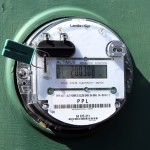 technologies at the consumption end, the amount of data will be increased exponentially making analysis of energy usage patterns even more complex. Finally, he also reiterated the lack of standards and the utility’s preference for using proprietary metrics rather than support standardization. Even when technologies have been adopted, Conrad pointed out it can still take decades to adopt and integrate a new technological standard, such as the DSL technology for transmitting data over phone lines. He expects progress on Smart Grid issues to be equally slow – predicting that it would take further decades to fully implement Smart Grid in the United States. “When you automate you have to do it right” he cautioned.
technologies at the consumption end, the amount of data will be increased exponentially making analysis of energy usage patterns even more complex. Finally, he also reiterated the lack of standards and the utility’s preference for using proprietary metrics rather than support standardization. Even when technologies have been adopted, Conrad pointed out it can still take decades to adopt and integrate a new technological standard, such as the DSL technology for transmitting data over phone lines. He expects progress on Smart Grid issues to be equally slow – predicting that it would take further decades to fully implement Smart Grid in the United States. “When you automate you have to do it right” he cautioned.
More fundamentally, Conrad indicated that the utilities are also cognizant that this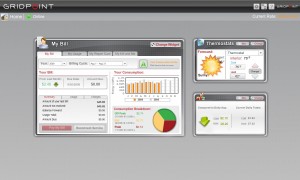 evolution of the energy market will change the basis upon which their business models rest. With the entrance of altogether new players into the mix, as well as increased uncertainty about how this market will segment service delivery there is more than enough anxiety to go around.
evolution of the energy market will change the basis upon which their business models rest. With the entrance of altogether new players into the mix, as well as increased uncertainty about how this market will segment service delivery there is more than enough anxiety to go around.
Review of the Class structure and readings
Following Conrad’s presentation, the balance of the class was devoted to reviewing how the materials would be broken down into the various class segments. Some of the later classes were reserved to as-yet unannounced topics, as Jeff felt current events would mostly likely generate new material by that time.
The major topics that the class would cover were:
- Integration of wind energy
- Review of the Pacific Northwest Smart grid project
- Regulatory issues
- Customer concerns
- Sustainability and environmental benefits of Smart grid
– Jim Thayer

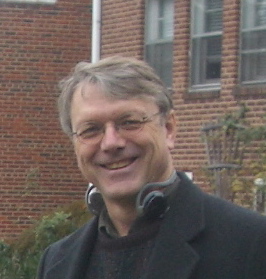

Hi Jim — a colleague found these impressive blog posts regarding the PSU smart grid course, and we were wondering why you decided to write about this on your forest hikes blog? We’re really just curious… and the course seems like it’s of very high quality. We do our own series of smart grid courses online through Bismarck State College (the curriculum is developed in partnership with six utility companies as part of a DOE grant project), and we’re always scouting for impressive learning models and folks who could be potential partners. Thank you for any information you can provide ahead of time!
Did you get my response? Jim
its pleasure to find this websit .
i have solved my problem from your post.
thanks……. shamsi